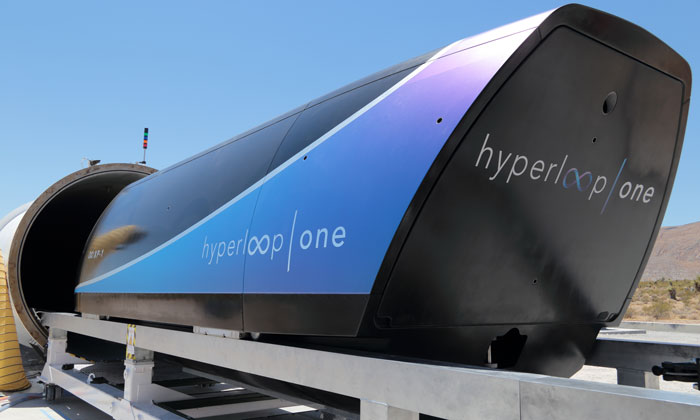Hyperloop One goes further and faster in its second phase of testing
- Like
- Digg
- Del
- Tumblr
- VKontakte
- Buffer
- Love This
- Odnoklassniki
- Meneame
- Blogger
- Amazon
- Yahoo Mail
- Gmail
- AOL
- Newsvine
- HackerNews
- Evernote
- MySpace
- Mail.ru
- Viadeo
- Line
- Comments
- Yummly
- SMS
- Viber
- Telegram
- Subscribe
- Skype
- Facebook Messenger
- Kakao
- LiveJournal
- Yammer
- Edgar
- Fintel
- Mix
- Instapaper
- Copy Link
Posted: 3 August 2017 | Intelligent Transport | No comments yet
Hyperloop One continues to make history with the successful completion of its second phase of testing, going further and faster than before.


As the only company to have built an operational Hyperloop system, Hyperloop One continues to make history with the successful completion of its second phase of testing.
During Phase 2, the Hyperloop One XP-1 (the company’s first-generation pod) achieved historic test speeds in a tube depressurised down to the equivalent of air at 200,000 feet above sea level. It travelled nearly the full distance of the 500-meter DevLoop track in the Nevada desert and accelerated for 300 meters, gliding above the track using magnetic levitation before braking and coming to a gradual stop.
“This is the beginning, and the dawn of a new era of transportation,” said Shervin Pishevar, Executive Chairman and Co-founder of Hyperloop One. “We’ve reached historic speeds of 310km an hour, and we’re excited to finally show the world the XP-1 going into the Hyperloop One tube. When you hear the sound of the Hyperloop One, you hear the sound of the future.”
All components of the system were also successfully tested during this phase, including the highly efficient electric motor, advanced controls and power electronics, custom magnetic levitation and guidance, pod suspension and vacuum system.


Phase 2 vs Phase 1
- Achieved 2.7x faster speed (192 mph vs. 69 mph)
- Went 4.5x further distance (1,433 feet vs. 315 feet)
- 10x longer propulsion segment (300m vs. 30m)
- 5x more power to the pod (3,151hp vs. 891hp)
“We’ve proven that our technology works, and we’re now ready to enter into discussions with partners, customers and governments around the world about the full commercialization of our Hyperloop technology,” said Hyperloop One CEO Rob Lloyd. “We’re excited about the prospects and the reception we’ve received from governments around the world to help solve their mass transportation and infrastructure challenges.”
With Hyperloop One, passengers and cargo are loaded into a pod, and accelerate gradually via electric propulsion through a low-pressure tube. The pod quickly lifts above the track using magnetic levitation and glides at airline speeds for long distances due to ultra-low aerodynamic drag.
Related topics
Business Models, Fleet Management & Maintenance, Mobility Services, Multimodality, Ticketing & Payments, Transport Governance & Policy
Related organisations
Hyperloop







